|
|
|
|
Products mentioned in this Article
|
|
|
|
|
|
|
|
|
 |
|
|
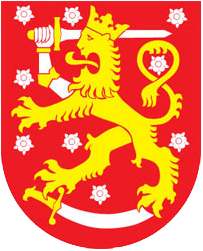 |
The Lion and the Eagle - Part One
Finland and Germany in World War Two
by Scott Elaurant
Political Background
One of the most complex and (in Finland at least) still controversial relationships in World War Two was that between Finland and Germany. Finland and Germany were never formally allied, and Finnish units never fought under German command. The Finns and Germans had a common enemy – the Soviet Union – but in other respects were far apart.
|
Germany was trying to conquer the Soviet Union, Finland only wanted to get Karelia back. Finnish politics was generally opposed to fascism, and the anti-semitic aspects of Nazism were unpopular. Yet the fact remains, that Finland did accept Germany’s military assistance, and although rarely mentioned, there were a few instances where Finnish and German troops did fight directly together.
|
There are understandable reasons why Finland would wish to downplay its cooperation with Germany. In the Cold War period, Finland found itself isolated and desperately trying to appease the neighboring Soviet Union to remain independant. Soviet invasions of Hungary (1956) and Czeckoslavia (1968) only emphasised Finnish vunerability. The whole Jatkosota (Continuation War) against the Soviet Union was given less attention than the Winter War by authors and scholars, even though double the number of Finnish troops died in the Jatkosota as in the Winter War.
|
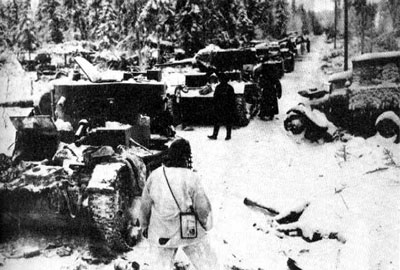 |
The decision to cooperate with Germany in 1941 was one that has generally been regarded as a mistake in the post war period. However Finnish leaders felt they had few options at the time. Previously when the Soviet Union had invaded Finland in the 1939 Winter War, western nations had been sympathetic, even admiring of the Finnish army resisting the “Russian bear”. Winston Churchill said in a speech in the British parliament in 1940 “Finland alone - in danger of death, superb, sublime Finland – has shown us what free men can do". At the time the Soviet Union was allied with Germany and Britain’s enemy.
|
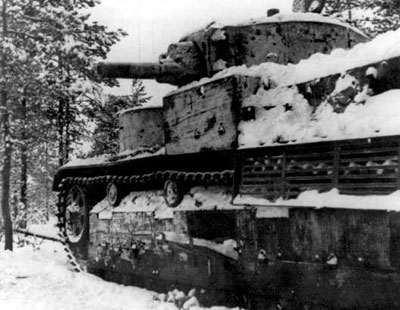 |
But times would change. Western aid arrived too
late to prevent Finland being forced to accept harse Soviet peace terms
in the Winter War. As Germany and the Soviet Union moved apart, western
powers allied with Moscow to defeat Hitler. (Later Britain would declare war on Finland to appease Stalin.)
Finland found itself with a German army occupying Norway to the west,
and a Soviet army still on its eastern border. Many factions in Finland
still bitterly resented the Winter War treaty, in which Finland had
lost Karelia, home to 10% of the population.
Germany offered military aid in exchange for
Finnish cooperation (although Finland would be made to pay full price
for all German supplied arms.)
|
| After months of negotiations Finland
agreed to let German forces attck through their territory, and after
the Soviet bombing of Finnish cities on 25 June 1941, joined them in
Operation Barbarossa. Britain then declared war
on Finland, although these were symbolic gestures. |
Co-Belligerant Status
Even when agreement was reached with Germany, Finland was extremely
careful not to call it an alliance. The issue was very sensitive in
domestic and international politics. The US ambassador in Helsinki had
frequent meetings with Finnish Prime Minister Risto Ryti on the
subject. The government refused to join up with an equivalent of the
Axis Tripartite agreement of 1940 between Germany, Italy and Japan.
They referred to themselves as “co-belligerants” rather than allies.
That is, they had a common enemy – the Soviet Union – but little else
in common.
|
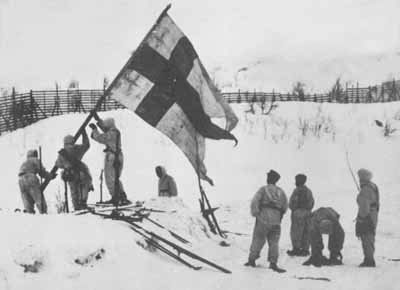 |
Even then the conditions would be strict:
• Germany would be permitted to attack the Soviet Union from Norway via Finland (Operation Silberfuchs).
• Finland would coordinate its own offensive to recapture Karelia with Barbarossa.
• The Finnish army would remain under separate Finnish command.
• Germany would be permitted to recruit a battalion of Finnish troops
(these served in SS Viking Division until 1943).
• Germany would supply Finland weapons, for which Finland would pay the market price.
These conditions meant that cooperation between the Finnish and German
armies was poor. Liaison staff were attached to each at headquarters
level, but with a few exceptions tactical cooperation was almost
non-existant. Finnish officers did run training camps for German
infantry in winter warfare techniques in 1941 and 1942, but there were
no reciprocal arrangements. |
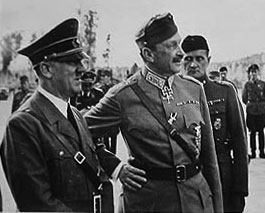 |
The Political Aftermath
Over time the Finnish government began to lose enthusiasm for the
agreement. Even in the 1941 offensive it had refused to assist in a
German attack on Leningrad. By 1942 it quietly ordered the Finnish Army
not to attempt to capture the Murmansk railway. In 1943 it began peace
negotiations with Moscow, although these were rebuffed by Stalin.
In the 1944 Soviet summer offensive Finland desperately needed military
assistance. The personal intervention of Finnish prime minister Ryti
and commander in chief Marshall Mannerheim convinced Hitler to supply
Finland critical anti-tank weapons, and a unit of air-support, Gruppe
Kulhmay.
|
These helped enable Finland to stem the Soviet advance and
achieve a peace deal with Moscow. However by then it was obvious that
the agreement was over. Prime Minister Ryti resigned in order for the
peace agreement to be signed. Part of the peace conditions with Moscow
were that Finland had to forceably expel German troops from Finland.
This led to a new round of fighting between Germany and Finland in
Lapland. The Lapisota or Lapland War lasted from September 1944 until
the last German troops retreated into Norway in April 1945.
Even after the war, Finland’s precarious position in international
politics saw it anxious to appease the Soviet Union by various means.
Little recognition was given to the role of Finnish political leaders
during the co-belligerant period. The role of Gruppe Kulhmey in halting
the 1944 Soviet offensive was rarely mentioned. Many books stated that
Finnish and German troops never fought together on the battlefield
although, as we shall see next, that was not quite true.
Continue to The Lion and The Eagle Part Two - Operation Silberfuchs (Live on the 4 March 2010)... |
Last Updated On Tuesday, July 13, 2010 by Wayne at Battlefront
|
|
|